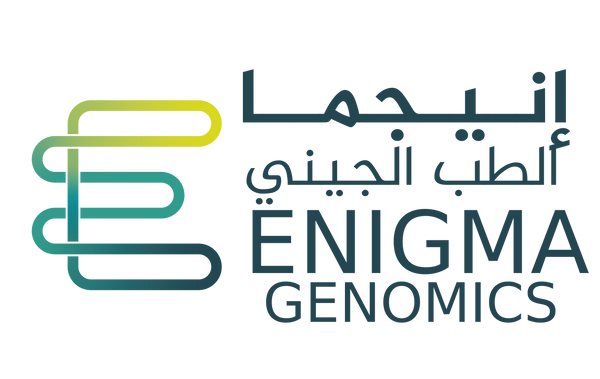
Gene therapy - techniques and challenges
Since gene therapy has shown promise in treating some forms of cancer, heart disease, diabetes, and some genetic blood illnesses including sickle cell anemia, it is one of the most well-known medical technologies that offers hope in curing incurable genetic diseases.
To develop new methods for treating more genetic illnesses, researchers are still investigating the potential of gene therapy. The CRISPR technology, which has shown promise in treating sickle cell anemia, is the most significant of these strategies.
We shall discuss the idea of gene therapy, its various forms, and how CRISPR technology has altered how some genetic illnesses are treated in this post.
What exactly is gene therapy?
The goal of gene therapy is to treat or prevent a particular disease brought on by a DNA flaw in a number of methods, such as:
- Introducing a new copy of the damaged gene.
- replacing the illness-causing gene with a new one in immune cells to improve the cells' disease resistance.
- Turn off the genes that cause sickness.
The type of genetic defect and how much it affects health determine which approach is best.
Gene therapy techniques
Gene therapy is also known as gene editing, and one of its most well-known techniques is the CRISPR-Cas9 technique. This method involves cutting the undesirable portion of the DNA with the Cas9 protein combined with a copy of the RNA that corresponds to the undesirable portion of the DNA, replacing it with a healthy portion, and allowing the DNA to automatically repair itself.
Using CRISPR-Cas9 technique, scientists insert healthy DNA into the gene to alter its function and treat cancer and other genetic diseases. They can also utilize it to boost agricultural production, among other things.
In the realm of gene editing, CRISPR-Cas9 is regarded as a promising technology because it has simplified the treatment of genetic disorders and helped identify cutting-edge cures for some hereditary conditions like sickle cell anemia, Tay-Sachs syndrome, Blindness caused by retinitis pigmentosa, and more.
By altering the DNA of agricultural crops, CRISPR technology can also be used to boost agricultural output. Research is ongoing to further the application of CRISPR technology and boost its efficacy.
Genetic disorders and gene therapy
Further research is being done in an effort to boost the efficiency of gene therapy for more genetic diseases. Gene therapy has been successful in treating some incurable genetic diseases that are common worldwide. Examples of genetic disorders where gene therapy has been successful using CRISPR technology include:
Sickle cell anemia
In order to manage the complications of sickle cell anemia, which affects around 20 million people globally, patients formerly had to have a bone marrow transplant from a donor whose bone marrow matched their own.
In a recent case in the United States, gene therapy provided a promising treatment for sickle cell anemia by using CRISPR technology to modify the sickle cell anemia-causing genes in red blood cell stem cells and replace them with healthy genes before infused them into the patient. This resulted in restoring the efficiency of red blood cells in producing fetal hemoglobin, a protein with too much oxygen that replaces damaged hemoglobin.
Cancer
Leukemia and other cancers have been treated using some types of gene therapy. Methods for cancer gene therapy include:
1. Specifically targeting cancer cells by altering the immune system of the patient to identify and destroy cancer cells.
2. Including genes that fight cancer. Some cancers develop as a result of a mutation in the genes that control how quickly cancer cells grow and spread. Healthy copies of these genes can be introduced to cancer cells by gene therapy to restore their functionality and stop the spread of cancer.
3. Overcoming drug resistance of cancer cells. Some types of cancer have developed resistance to traditional cancer treatments such as chemotherapy and radiotherapy. Through gene therapy, genes can be introduced that improve the response of cancer cells to treatment and increase the chances of recovery.
4. Reducing the recurrence of cancer, by using gene therapy to target remaining cancer cells to prevent it from returning again.
The development of new cancer treatments and cancer research have both benefited from the use of CRISPR technology. One such example is the testing and development of a cancer immunotherapy that intends to alter the T cells responsible for eradicating cancer.
Gene therapy's risks
There are many benefits to gene therapy and its uses in a variety of industries, including agriculture, health, and others, but there are also some possible drawbacks due to how it is applied.
When a disease-causing gene is replaced in cells with a healthy gene utilizing viral vectors, the following results can be seen:
Immune system insufficiency
These viral vectors might be recognized by the body's immune system as a threat and targeted as a result, which could lead to infections and even organ failure.
Targeting the wrong cells
Because to viruses' capacity to affect multiple types of cells, viral vectors may inadvertently attack healthy cells while spreading other diseases.
Infection
The virus might restore its capacity to spread infection and cause sickness.
Gene therapy and genetic testing
To assist in the diagnosis of diseases or predict the chance of having a specific condition, such as cancer, genetic testing looks for disease-causing alterations in DNA, or mutations. Based on your family history of inherited diseases, genetic counseling before and after the test helps identify the best genetic test for you. It also clarifies the test results and provides you with the required advice for suitable prevention or treatment.
While there are several methods that gene therapy can cure these DNA modifications, the best approach will depend on the kind of changes that are already present in the DNA.
In conclusion, genetic testing and gene therapy are complementary. In order to lessen the spread of genetic diseases and raise the standard of healthcare for our society, we will be able to increase the efficacy of gene therapy through the results of genetic testing and contribute to the development of the area of genetic research.
